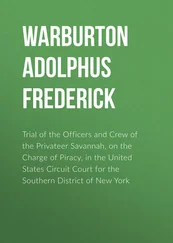Turn another Watchtower page for an eloquent account of the giant redwood ( Sequoiadendron giganteum ), a tree for which I have a special affection because I have one in my garden—a mere baby, scarcely more than a century old, but still the tallest tree in the neighbourhood. “A puny man, standing at a sequoia’s base, can only gaze upward in silent awe at its massive grandeur. Does it make sense to believe that the shaping of this majestic giant and of the tiny seed that packages it was not by design?” Yet again, if you think the only alternative to design is chance then, no, it does not make sense. But again the authors omit all mention of the real alternative, natural selection, either because they genuinely don’t understand it or because they don’t want to.
The process by which plants, whether tiny pimpernels or massive wellingtonias, acquire the energy to build themselves is photosynthesis. Watchtower again: “‘There are about seventy separate chemical reactions involved in photosynthesis,’ one biologist said. ‘It is truly a miraculous event.’ Green plants have been called nature’s ‘factories’—beautiful, quiet, nonpolluting, producing oxygen, recycling water and feeding the world. Did they just happen by chance? Is that truly believable?” No, it is not believable; but the repetition of example after example gets us nowhere. Creationist “logic” is always the same. Some natural phenomenon is too statistically improbable, too complex, too beautiful, too awe-inspiring to have come into existence by chance. Design is the only alternative to chance that the authors can imagine. Therefore a designer must have done it. And science’s answer to this faulty logic is also always the same. Design is not the only alternative to chance. Natural selection is a better alternative. Indeed, design is not a real alternative at all because it raises an even bigger problem than it solves: who designed the designer? Chance and design both fail as solutions to the problem of statistical improbability, because one of them is the problem, and the other one regresses to it. Natural selection is a real solution. It is the only workable solution that has ever been suggested. And it is not only a workable solution, it is a solution of stunning elegance and power.
What is it that makes natural selection succeed as a solution to the problem of improbability, where chance and design both fail at the starting gate? The answer is that natural selection is a cumulative process, which breaks the problem of improbability up into small pieces. Each of the small pieces is slightly improbable, but not prohibitively so. When large numbers of these slightly improbable events are stacked up in series, the end product of the accumulation is very very improbable indeed, improbable enough to be far beyond the reach of chance. It is these end products that form the subjects of the creationist’s wearisomely recycled argument. The creationist completely misses the point, because he (women should for once not mind being excluded by the pronoun) insists on treating the genesis of statistical improbability as a single, one-off event. He doesn’t understand the power of accumulation.
In Climbing Mount Improbable, I expressed the point in a parable. One side of the mountain is a sheer cliff, impossible to climb, but on the other side is a gentle slope to the summit. On the summit sits a complex device such as an eye or a bacterial flagellar motor. The absurd notion that such complexity could spontaneously self-assemble is symbolized by leaping from the foot of the cliff to the top in one bound. Evolution, by contrast, goes around the back of the mountain and creeps up the gentle slope to the summit: easy! The principle of climbing the gentle slope as opposed to leaping up the precipice is so simple, one is tempted to marvel that it took so long for a Darwin to arrive on the scene and discover it. By the time he did, nearly three centuries had elapsed since Newton’s annus mirabilis, although his achievement seems, on the face of it, harder than Darwin’s.
Another favourite metaphor for extreme improbability is the combination lock on a bank vault. Theoretically, a bank robber could get lucky and hit upon the right combination of numbers by chance. In practice, the bank’s combination lock is designed with enough improbability to make this tantamount to impossible—almost as unlikely as Fred Hoyle’s Boeing 747. But imagine a badly designed combination lock that gave out little hints progressively—the equivalent of the “getting warmer” of children playing Hunt the Slipper. Suppose that when each one of the dials approaches its correct setting, the vault door opens another chink, and a dribble of money trickles out. The burglar would home in on the jackpot in no time.
Creationists who attempt to deploy the argument from improbability in their favour always assume that biological adaptation is a question of the jackpot or nothing. Another name for the “jackpot or nothing” fallacy is “irreducible complexity” (IC). Either the eye sees or it doesn’t. Either the wing flies or it doesn’t. There are assumed to be no useful intermediates. But this is simply wrong. Such intermediates abound in practice—which is exactly what we should expect in theory. The combination lock of life is a “getting warmer, getting cooler, getting warmer” Hunt the Slipper device. Real life seeks the gentle slopes at the back of Mount Improbable, while Creationists are blind to all but the daunting precipice at the front.
Darwin devoted an entire chapter of the Origin of Species to “Difficulties on the theory of descent with modification,” and it is fair to say that this brief chapter anticipated and disposed of every single one of the alleged difficulties that have since been proposed, right up to the present day. The most formidable difficulties are Darwin’s “organs of extreme perfection and complication,” sometimes erroneously described as “irreducibly complex.” Darwin singled out the eye as posing a particularly challenging problem: “To suppose that the eye with all its inimitable contrivances for adjusting the focus to different distances, for admitting different amounts of light, and for the correction of spherical and chromatic aberration, could have been formed by natural selection, seems, I freely confess, absurd in the highest degree.” Creationists gleefully quote this sentence again and again. Needless to say, they never quote what follows. Darwin’s fulsomely free confession turned out to be a rhetorical device. He was drawing his opponents towards him so that his punch, when it came, struck the harder. The punch, of course, was Darwin’s effortless explanation of exactly how the eye evolved by gradual degrees. Darwin may not have used the phrase “irreducible complexity,” or “the smooth gradient up Mount Improbable,” but he clearly understood the principle of both.
“What is the use of half an eye?” and “What is the use of half a wing?” are both instances of the argument from “irreducible complexity.” A functioning unit is said to be irreducibly complex if the removal of one of its parts causes the whole to cease functioning. This has been assumed to be self-evident for both eyes and wings. But as soon as we give these assumptions a moment’s thought, we immediately see the fallacy. A cataract patient with the lens of her eye surgically removed can’t see clear images without glasses, but can see enough not to bump into a tree or fall over a cliff. Half a wing is indeed not as good as a whole wing, but it is certainly better than no wing at all. Half a wing could save your life by easing your fall from a tree of a certain height. And 51 percent of a wing could save you if you fall from a slightly taller tree. Whatever fraction of a wing you have, there is a fall from which it will save your life where a slightly smaller winglet would not. The thought experiment of trees of different height, from which one might fall, is just one way to see, in theory, that there must be a smooth gradient of advantage all the way from 1 per cent of a wing to 100 percent. The forests are replete with gliding or parachuting animals illustrating, in practice, every step of the way up that particular slope of Mount Improbable.
Читать дальше












